The Pyrogeography of Methane Emissions from Seasonal Mosaic Burning Regimes in a West African Landscape
Abstract
:1. Introduction
1.1. Methane Emissions and Savanna Spatiotemporal Complexity
- Vegetation desiccation (fuel drying) generally causes an increase in combustion efficiency as drier fuels combust more completely, which theoretically results in a drop in the EFs of CO and CH4 since they are products of incomplete combustion.
- As fuel drying progresses further, there is an increase in fire intensity (a measure of the energy emitted by a fire, which affects the flame and scorch height), as well as fire severity (the amount of vegetation affected by a fire), which theoretically increases the amount of fuel consumed and increases the emission density.
- As grasses (fuels) become more uniformly dry as the season progresses, there is less patchiness in terms of fuel moisture, typically resulting in an increase in burn size and completeness (both the CC and BAC) at the plot and landscape scale, theoretically increasing the emission density (Figure 2).
1.2. Seasonal Emission Equations
2. Methods
2.1. The Local Fire Regime
2.2. Data Collection
2.3. Plot Design
2.4. Field Data Analysis
2.5. Gas Emissions Sampling and Analysis
2.6. Statistical Analysis
3. Results
3.1. General Fire Characteristics by Season
3.2. Emissions by Season
3.3. Regression Analyses
3.4. Comparison of Local and Random Fires in the MDS
4. Discussion
4.1. Causes of Elevated Methane Emission Parameters and Seasonal Differences
4.2. Local (Systematic) vs. Random Fire
4.3. Policy Implications
5. Conclusions
Supplementary Materials
Author Contributions
Funding
Data Availability Statement
Acknowledgments
Conflicts of Interest
References
- Ramo, R.; Roteta, E.; Bistinas, I.; van Wees, D.; Bastarrika, A.; Chuvieco, E.; van der Werf, G.R. African burned area and fire carbon emissions are strongly impacted by small fires undetected by coarse resolution satellite data. Proc. Natl. Acad. Sci. USA 2021, 118, e2011160118. [Google Scholar] [CrossRef] [PubMed]
- Saunois, M.; Jackson, R.B.; Bousquet, P.; Poulter, B.; Canadell, J. The growing role of methane in anthropogenic climate change. Environ. Res. Lett. 2016, 11, 120207. [Google Scholar] [CrossRef]
- Saunois, M. The global methane budget 2000–2017. Earth Syst. Sci. Data 2020, 12, 1561–1623. [Google Scholar] [CrossRef]
- Laris, P.; Kone, M.; Dembele, F.; Yang, L.; Jacobs, R.; Camara, F. Methane gas emissions from savanna fires: What analysis of local burning regimes in a working West African landscape tell us. Biogeoscience 2021, 18, 6229–6244. [Google Scholar] [CrossRef]
- Du Toit, J.T. Large herbivores and savanna heterogeneity. In The Kruger Experience: Ecology and Management of Savanna Heterogeneity; Island Press: Washington, DC, USA, 2003; pp. 292–309. [Google Scholar]
- Holdo, R.M.; Donaldson, J.E.; Rugemalila, D.M.; Anderson, T.M. Sapling growth gradients interact with homogeneous disturbance regimes to explain savanna tree cover discontinuities. Ecol. Monogr. 2022, 92, e1514. [Google Scholar] [CrossRef]
- Cole, M.M. The savannas. Prog. Phys. Geogr. 1987, 11, 334–355. [Google Scholar] [CrossRef]
- Duvall, C.S. Biocomplexity from the Ground Up: Vegetation Patterns in a West African Savanna Landscape. Ann. Assoc. Am. Geogr. 2011, 101, 497–522. [Google Scholar] [CrossRef]
- Russell-Smith, J.; Edwards, A.C. Seasonality and fire severity in savanna landscapes of monsoonal northern Australia. Int. J. Wildland Fire 2006, 15, 541–550. [Google Scholar] [CrossRef]
- Govender, N.; Trollope, W.S.W.; Van Wilgen, B.W. The effect of fire season, fire frequency, rainfall and management on fire intensity in savanna vegetation in South Africa. J. Appl. Ecol. 2006, 43, 748–758. [Google Scholar] [CrossRef]
- Le Page, Y.; Oom, D.; Silva, J.; Jönsson, P.; Pereira, J.M.C. Seasonality of vegetation fires as modified by human action: Observing the deviation from eco-climatic fire regimes. Glob. Ecol. Biogeogr. 2010, 19, 575–588. [Google Scholar] [CrossRef]
- Laris, P.; Jo, A.; Wechsler, S.; Dadashi, S. The Effects of Landscape Pattern and Vegetation Type on the Fire Regime of a Mesic Savanna in Mali. J. Environ. Manag. 2018, 227, 134–145. [Google Scholar] [CrossRef] [PubMed]
- Russell-Smith, J.; Yates, C.; Vernooij, R.; Eames, T.; van der Werf, G.; Ribeiro, N.; Edwards, A.; Beatty, R.; Lekoko, O.; Mafoko, J.; et al. Opportunities and challenges for savanna burning emissions abatement in southern Africa. J. Environ. Manag. 2021, 288, 112414. [Google Scholar] [CrossRef]
- Laris, P.; Koné, M.; Dadashi, S.; Dembele, F. The early/late fire dichotomy: Time for a reassessment of Aubreville’s savanna fire experiments. Prog. Phys. Geogr. 2017, 41, 68–94. [Google Scholar] [CrossRef]
- Laris, P. On the problems and promises of savanna fire regime change. Nat. Commun. 2021, 12, 4891. [Google Scholar] [CrossRef] [PubMed]
- Laris, P.; Dadashi, S.; Jo, A.; Wechsler, S. Buffering the savanna: Fire regimes and disequilibrium ecology in West Africa. Plant Ecol. 2016, 217, 583–596. [Google Scholar] [CrossRef]
- Laris, P.; Wardell, D.A. Good, bad or ‘necessary evil’? Reinterpreting the colonial burning experiments in the savanna landscapes of West Africa. Geogr. J. 2006, 172, 271–290. [Google Scholar] [CrossRef]
- Williams, J. Exploring the onset of high-impact mega-fires through a forest land management prism. For. Ecol. Manag. 2013, 294, 4–10. [Google Scholar] [CrossRef]
- Kull, C.A.; Laris, P. Fire ecology and fire politics in Mali and Madagascar. In Tropical Fire Ecology: Climate Change, Land Use and Ecosystem Dynamics; Cochrane, M., Ed.; Springer: Berlin/Heidelberg, Germany, 2009; pp. 171–226. [Google Scholar]
- Lipsett-Moore, G.J.; Wolff, N.H.; Game, E.T. Emissions mitigation opportunities for savanna countries from early dry season fire management. Nat. Commun. 2018, 9, 2247. [Google Scholar] [CrossRef]
- Tear, T.H.; Wolff, N.H.; Lipsett-Moore, G.J.; Ritchie, M.E.; Ribeiro, N.S.; Petracca, L.S.; Lindsey, P.A.; Hunter, L.; Loveridge, A.J.; Steinbruch, F. Savanna fire management can generate enough carbon revenue to help restore Africa’s rangelands and fill protected area funding gaps. One Earth 2021, 4, 1776–1791. [Google Scholar] [CrossRef]
- Laris, P. Grounding Environmental Narratives: The Impact of a Century of Fighting Against Fire in Mali. In African Environment and Development: Rhetoric, Programs, Realities; Moseley, W.G., Logan, B.I., Eds.; Ashgate Publishing: Surrey, UK, 2004. [Google Scholar]
- Devineau, J.-L.; Fournier, A.; Nignan, S. Savanna fire regimes assessment with MODIS fire data: Their relationship to land cover and plant species distribution in western Burkina Faso (West Africa). J. Arid. Environ. 2010, 74, 1092–1101. [Google Scholar] [CrossRef] [Green Version]
- Caillault, S.; Laris, P.; Fleurant, C.; Delahaye, D.; Ballouche, A. Anthropogenic Fires in West African Landscapes: A Spatially Explicit Model Perspective of Humanized Savannas. Fire 2020, 3, 62. [Google Scholar] [CrossRef]
- Knowles, T.; Archibald, S.; Stevens, N.; N’dri, B.; Chidumayo, E.; Smit, I.; Ruecker, G.; Humphrey, G.; Kimuyu, D.; Courtney-Mustaphi, D.; et al. Fire management to finance conservation in African protected areas is questionable in terms of its GHG emission impact, viability, and desired outcomes. (In Review)
- Laris, P. Burning the Seasonal Mosaic: Preventative Burning Strategies in the Wooded Savanna of Southern Mali. Hum. Ecol. 2002, 30, 155–186. [Google Scholar] [CrossRef]
- Laris, P. Humanizing Savanna Biogeography: Linking Human Practices with Ecological Patterns in a Frequently Burned Savanna of Southern Mali. Ann. Assoc. Am. Geogr. 2011, 101, 1067–1088. [Google Scholar] [CrossRef]
- IPCC: Good Practice Guidance for Land Use, Land-Use Change and Forestry. 2003. Available online: http://www.ipcc-nggip.iges.or.jp/public/gpglulucf/gpglulucf_contents.html (accessed on 25 November 2021).
- IPCC: Guidelines for National Greenhouse Gas Inventories, Agriculture, Forestry and other Land Use (AFOLU). 2006, Volume 4. Available online: http://www.ipcc-nggip.iges.or.jp/public/2006gl/vol4.html (accessed on 25 November 2021).
- Adole, T.; Dash, J.; Rodriguez-Galiano, V.; Atkinson, P.M. Photoperiod controls vegetation phenology across Africa. Commun. Biol. 2019, 2, 391. [Google Scholar] [CrossRef] [PubMed]
- Russell-Smith, J.; Murphy, B.P.; Meyer, C.P.; Cook, G.D.; Maier, S.; Edwards, A.C.; Schatz, J.; Brocklehurst, P. Improving estimates of savanna burning emissions for greenhouse accounting in northern Australia: Limitations, challenges, applications. Int. J. Wildland Fire 2009, 18, 1–18. [Google Scholar] [CrossRef]
- Laris, P.S. Spatiotemporal problems with detecting and mapping mosaic fire regimes with coarse-resolution satellite data in savanna environments. Remote Sens. Environ. 2005, 99, 412–424. [Google Scholar] [CrossRef]
- Henry, C. An Integrated Approach to Estimating Groundwater Storage, Variability and Recharge in Southern Mali, Africa. Master’s Thesis, Department of Earth Sciences, Simon Fraser University, Burnaby, BC, Canada, 2011. [Google Scholar]
- Caillault, S.; Ballouche, A.; Delahaye, D. Where are the ‘bad fires’ in W est A frican savannas? Rethinking burning management through a space–time analysis in B urkina F aso. Geogr. J. 2015, 181, 375–387. [Google Scholar] [CrossRef]
- Byram, G.M. Combustion of forest fuels. In Forest Fire: Control and Use; Davis, K.P., Ed.; McGraw-Hill: New York, NY, USA, 1959; pp. 61–89. [Google Scholar]
- Williams, R.J.; Gill, A.M.; Moore, P.H. Seasonal changes in fire behavior in a tropical savanna in northern Australia. Int. J. Wildland Fire 1998, 8, 227–239. [Google Scholar] [CrossRef]
- Ward, D.E.; Hao, W.M.; Susott, R.A.; Babbitt, R.E.; Shea, R.W.; Kauffman, J.B.; Justice, C.O. Effect of fuel composition on combustion efficiency and emission factors for African savanna ecosystems. J. Geophys. Res. Atmos. 1996, 101, 23569–23576. [Google Scholar] [CrossRef]
- Lacaux, J.P.; Brustet, J.M.; Delmas, R.; Menaut, J.C.; Abbadie, L.; Bonsang, B.; Cachier, H.; Baudet, J.; Andreae, M.; Helas, G. Biomass burning in the tropical savannas of Ivory Coast: An overview of the field experiment Fire of Savannas (FOS/DECAFE 91). J. Atmos. Chem. 1995, 22, 195–216. [Google Scholar] [CrossRef]
- Yokelson, R.; Bertschi, I.T.; Christian, T.J.; Hobbs, P.V.; Ward, D.E.; Hao, W.M. Trace gas measurements in nascent, aged, and cloud-processed smoke from African savanna fires by airborne Fourier transform infrared spectroscopy (AFTIR). J. Geophys. Res. Atmos. 2003, 108, 8478. [Google Scholar] [CrossRef]
- Laris, P.; Jacobs, R.; Koné, M.; Dembélé, F.; Rodrigue, C.M. Determinants of fire intensity in working landscapes of an African savanna. Fire Ecol. 2020, 16, 27. [Google Scholar] [CrossRef]
- Wooster, M.J.; Freeborn, P.H.; Archibald, S.; Oppenheimer, C.; Roberts, G.J.; Smith TE, L.; Palumbo, I. Field determination of biomass burning emission ratios and factors via open-path FTIR spectroscopy and fire radiative power assessment: Headfire, backfire and residual smouldering combustion in African savannahs. Atmos. Chem. Phys. 2011, 11, 11591–11615. [Google Scholar] [CrossRef]
- Akagi, S.K.; Yokelson, R.J.; Wiedinmyer, C.; Alvarado, M.J.; Reid, J.S.; Karl, T.; Crounse, J.D.; Wennberg, P.O. Emission factors for open and domestic biomass burning for use in atmospheric models. Atmos. Chem. Phys. 2011, 11, 4039–4072. [Google Scholar] [CrossRef]
- Nisbet, E.G.; Jones, A.E.; Pyle, J.A.; Skiba, U. Rising methane: Is there a methane emergency? Philos. Trans. R. Soc. A 2021, 380, 20210334. [Google Scholar] [CrossRef]
- Andela, N.; Morton, D.C.; Giglio, L.; Chen, Y.; van der Werf, G.R.; Kasibhatla, P.S.; DeFries, R.S.; Collatz, G.J.; Hantson, S.; Kloster, S.; et al. A human-driven decline in global burned area. Science 2017, 356, 1356–1362. [Google Scholar] [CrossRef]
- Laris, P. Integrating Land Change Science and Savanna Fire Models in West Africa. Land 2013, 2, 609–636. [Google Scholar] [CrossRef]
- Jones, P.J.; Furlaud, J.M.; Williamson, G.J.; Johnston, F.H.; Bowman, D.M.J.S. Smoke pollution must be part of the savanna fire management equation: A case study from Darwin, Australia. AMBIO 2022, 51, 2214–2226. [Google Scholar] [CrossRef]
- Andreae, M.O. Emission of trace gases and aerosols from biomass burning—An updated assessment. Atmos. Chem. Phys. 2019, 19, 8523–8546. [Google Scholar] [CrossRef] [Green Version]
- Murphy, B.; Russell-Smith, J.; Edwards, A.; Meyer, M.; Meyer, C.P. (Eds.) Carbon Accounting and Savanna Fire Management; CSIRO Press: Clayton, VIC, Australia, 2012. [Google Scholar]
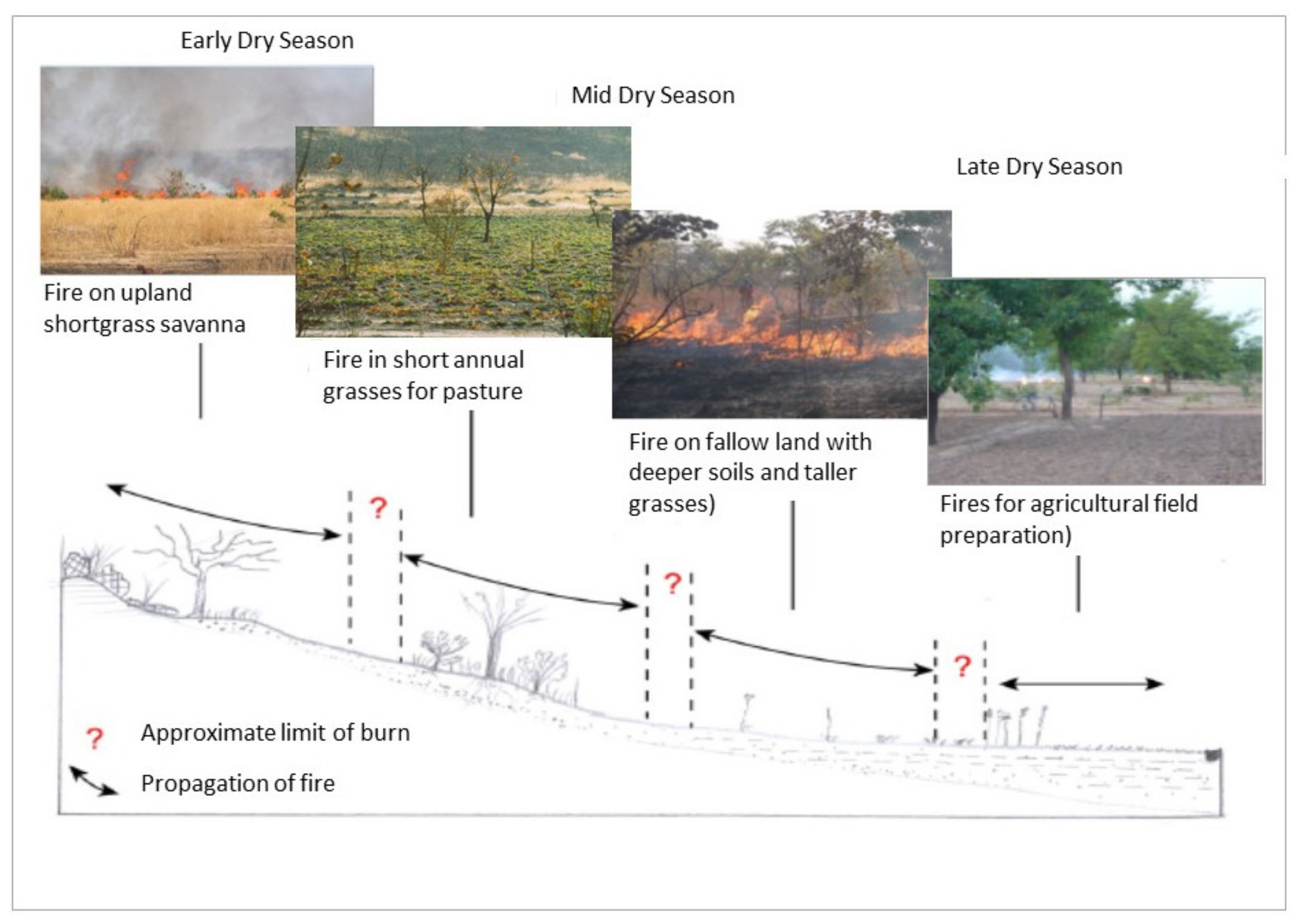
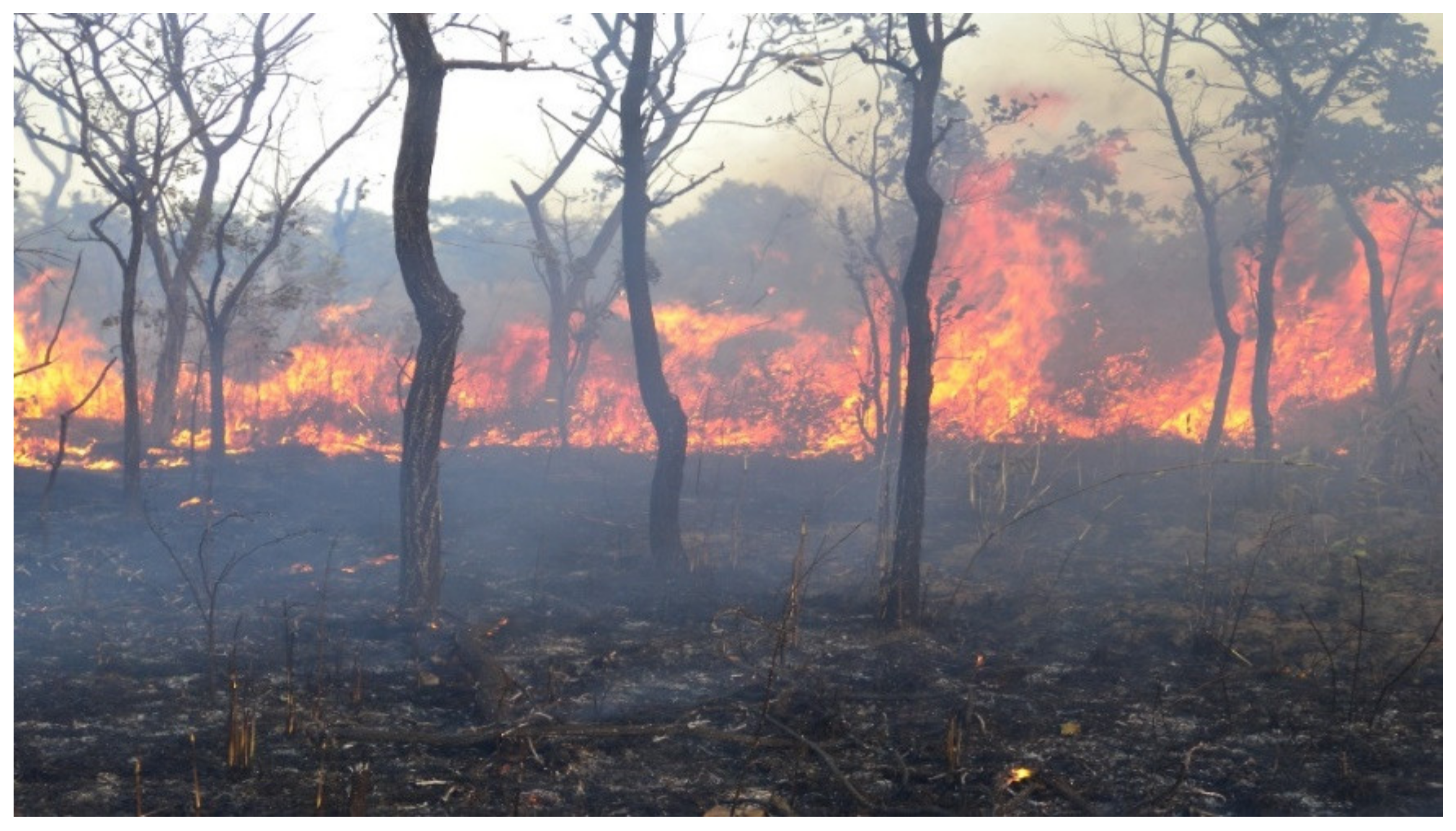
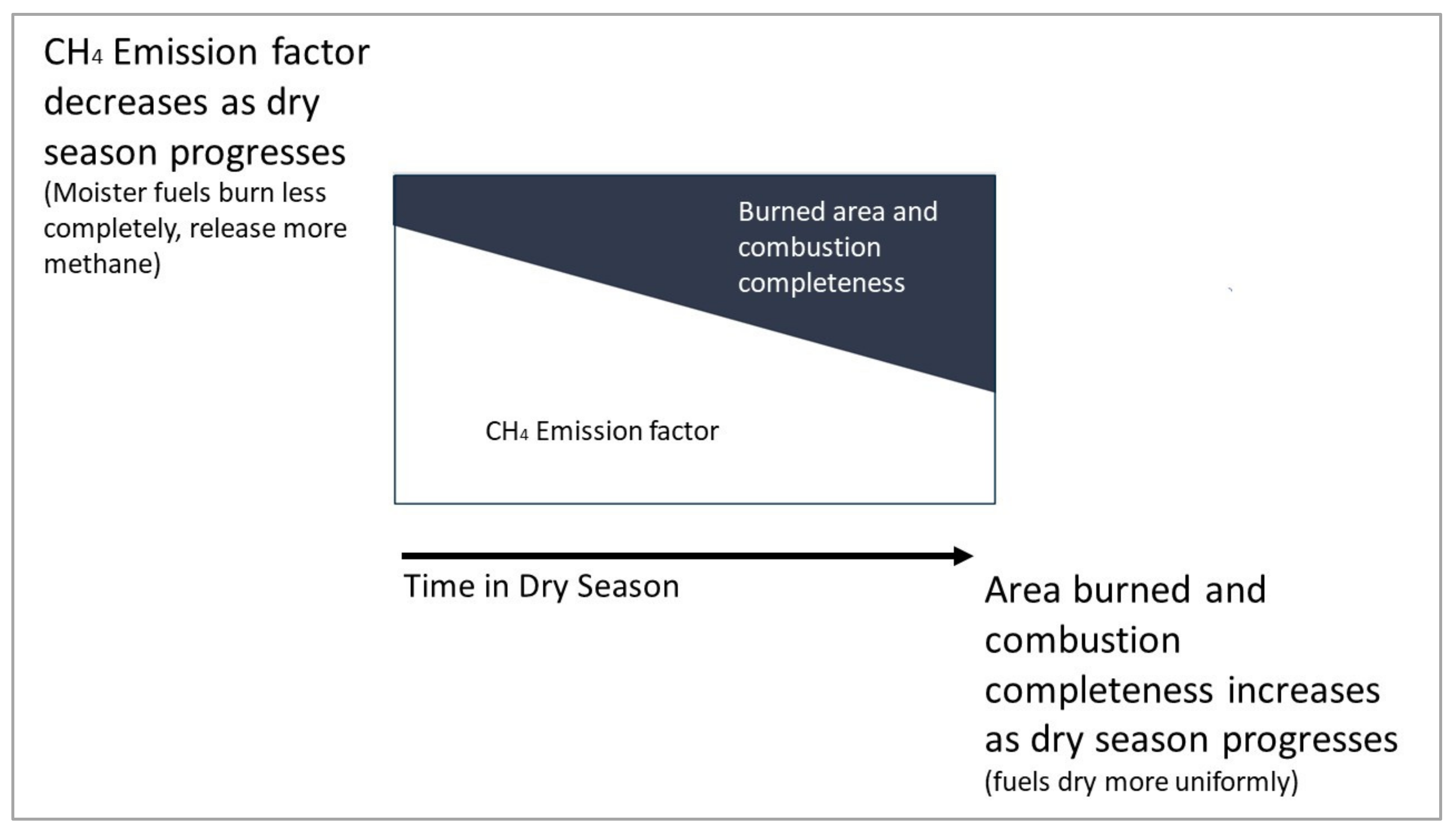
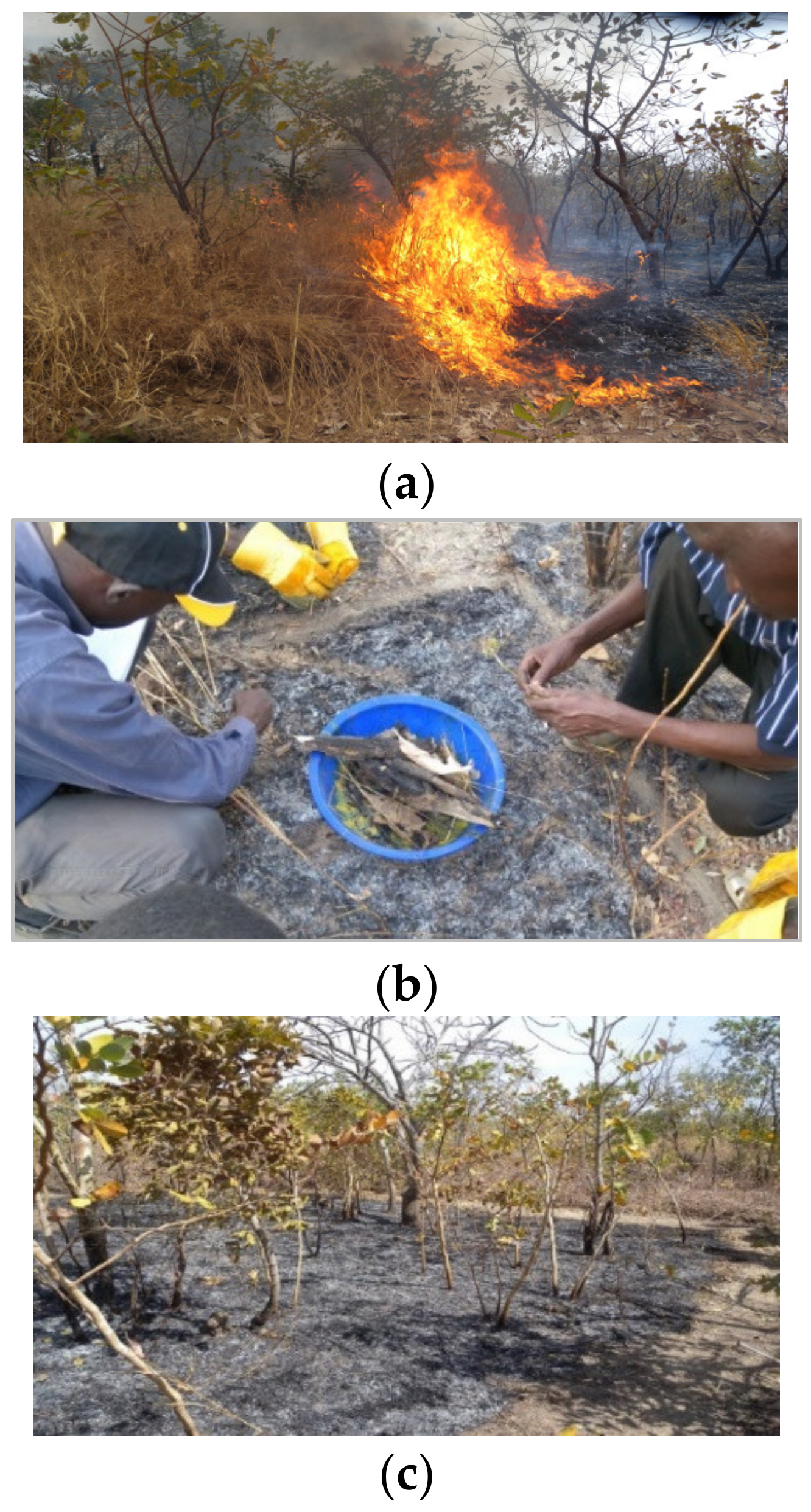
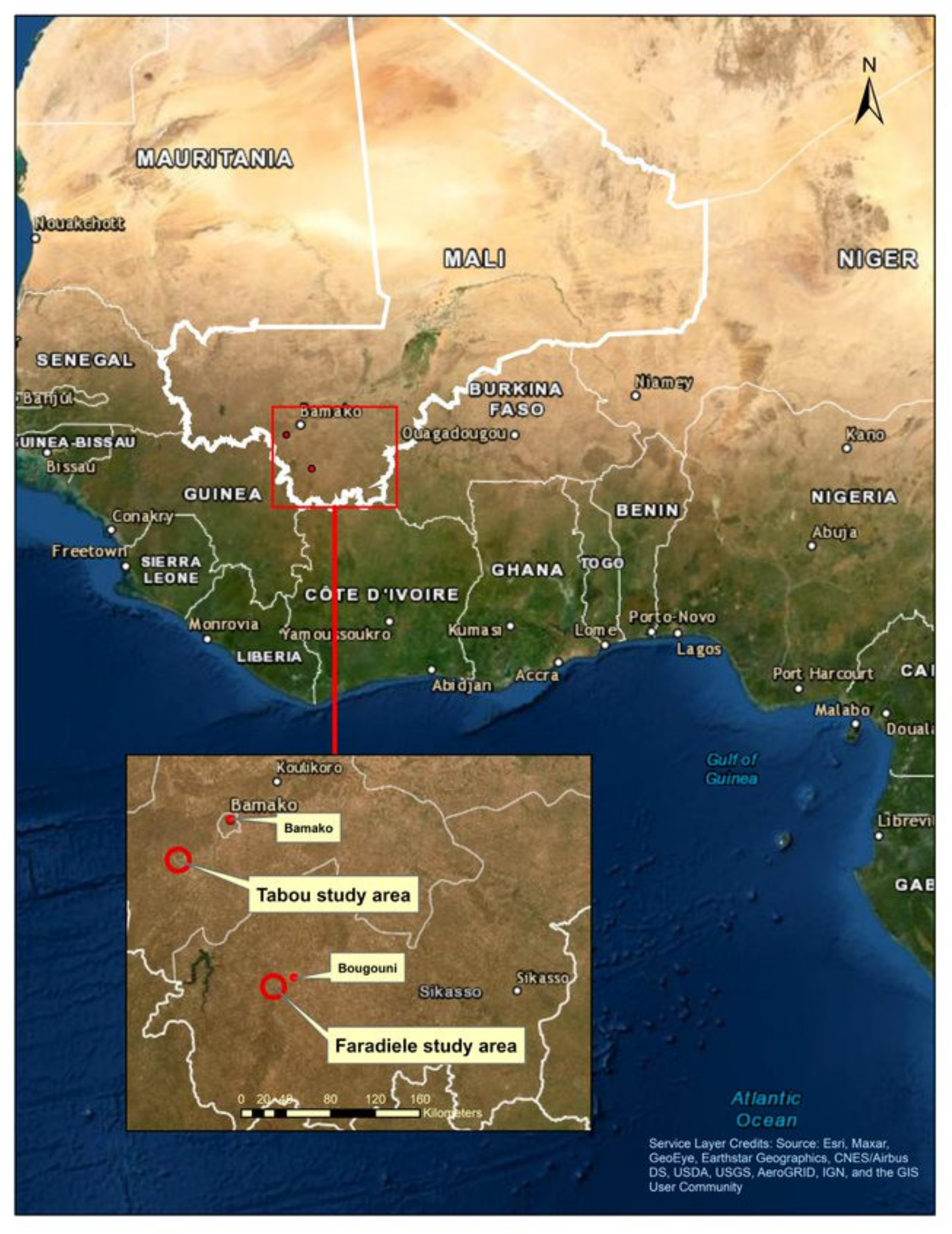
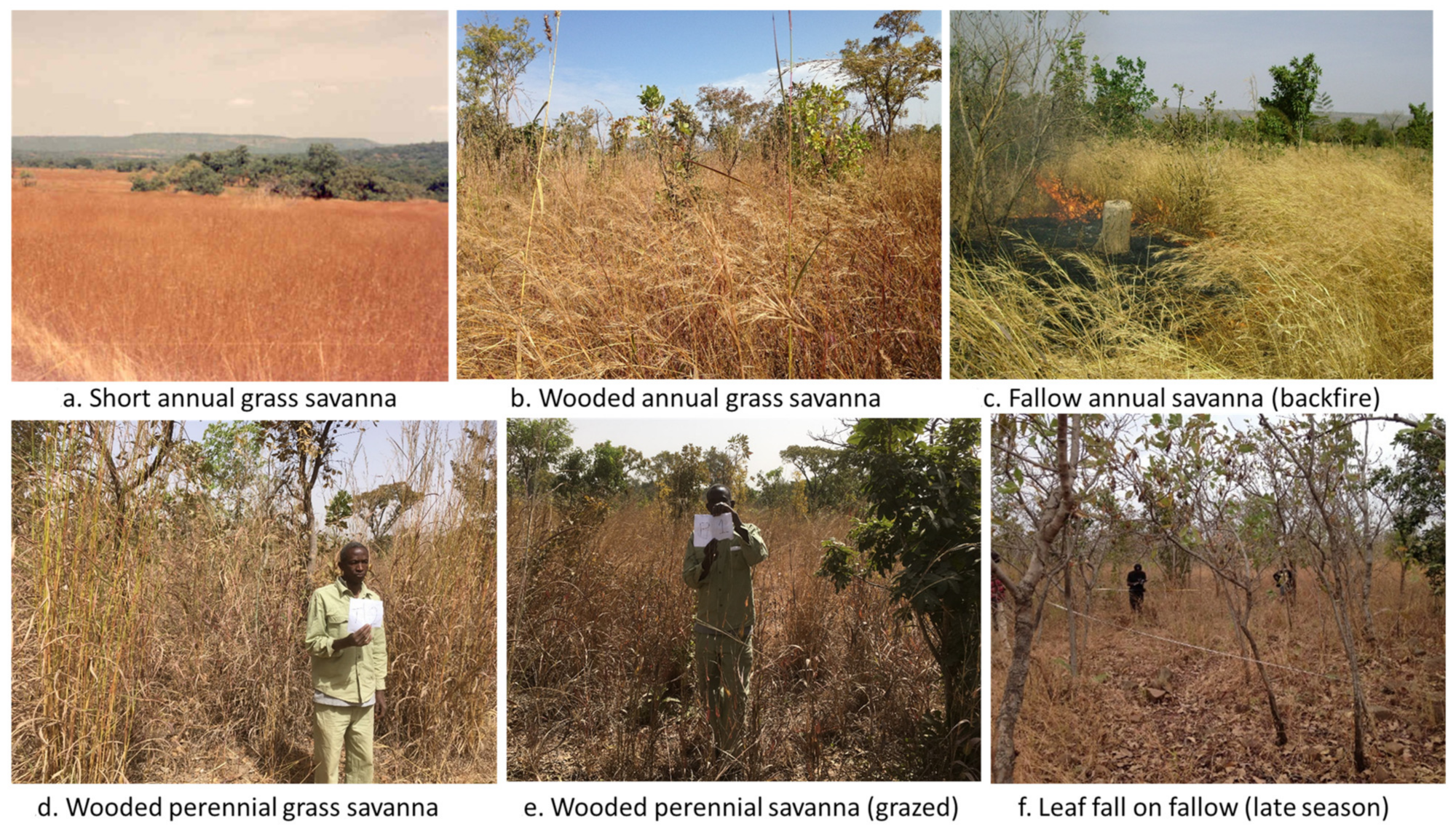
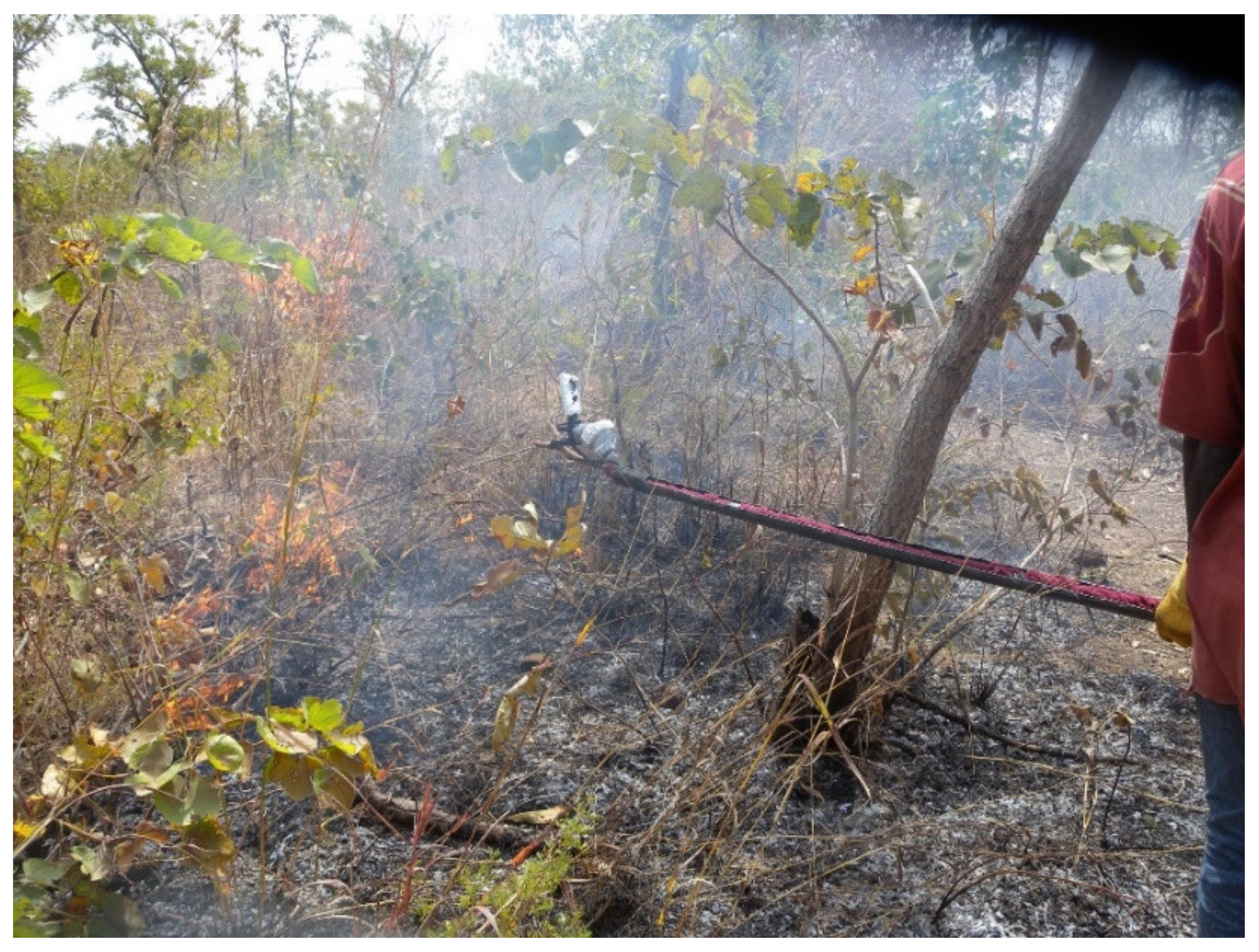
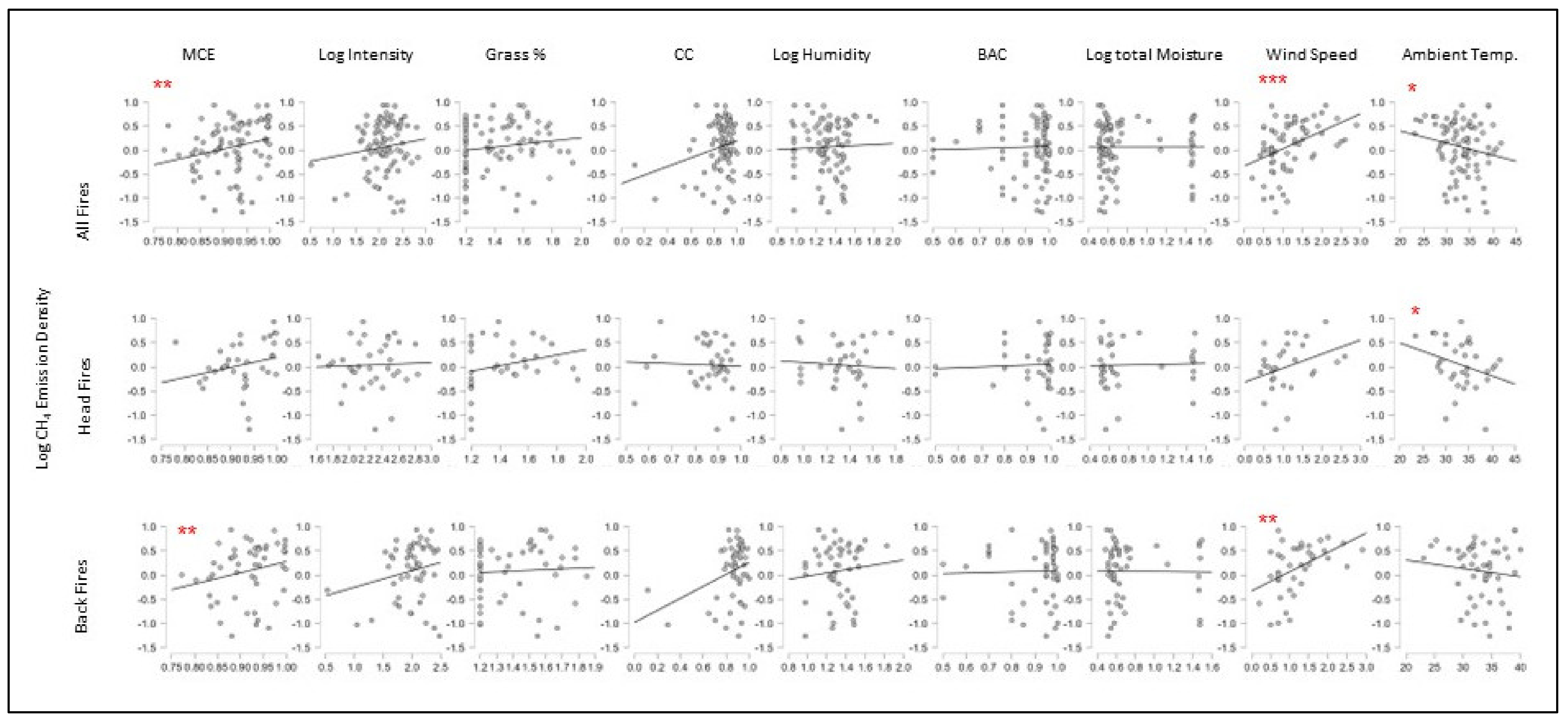
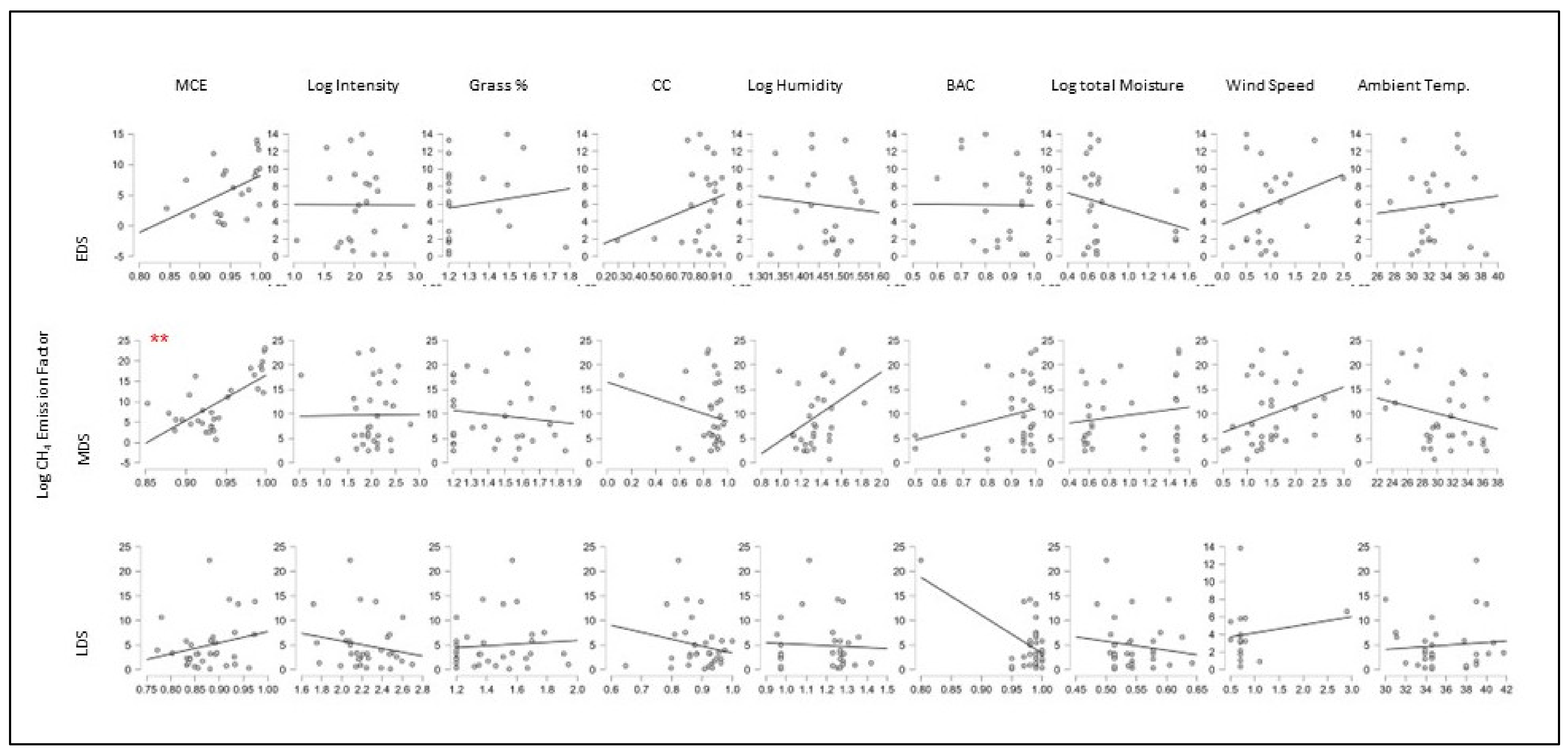
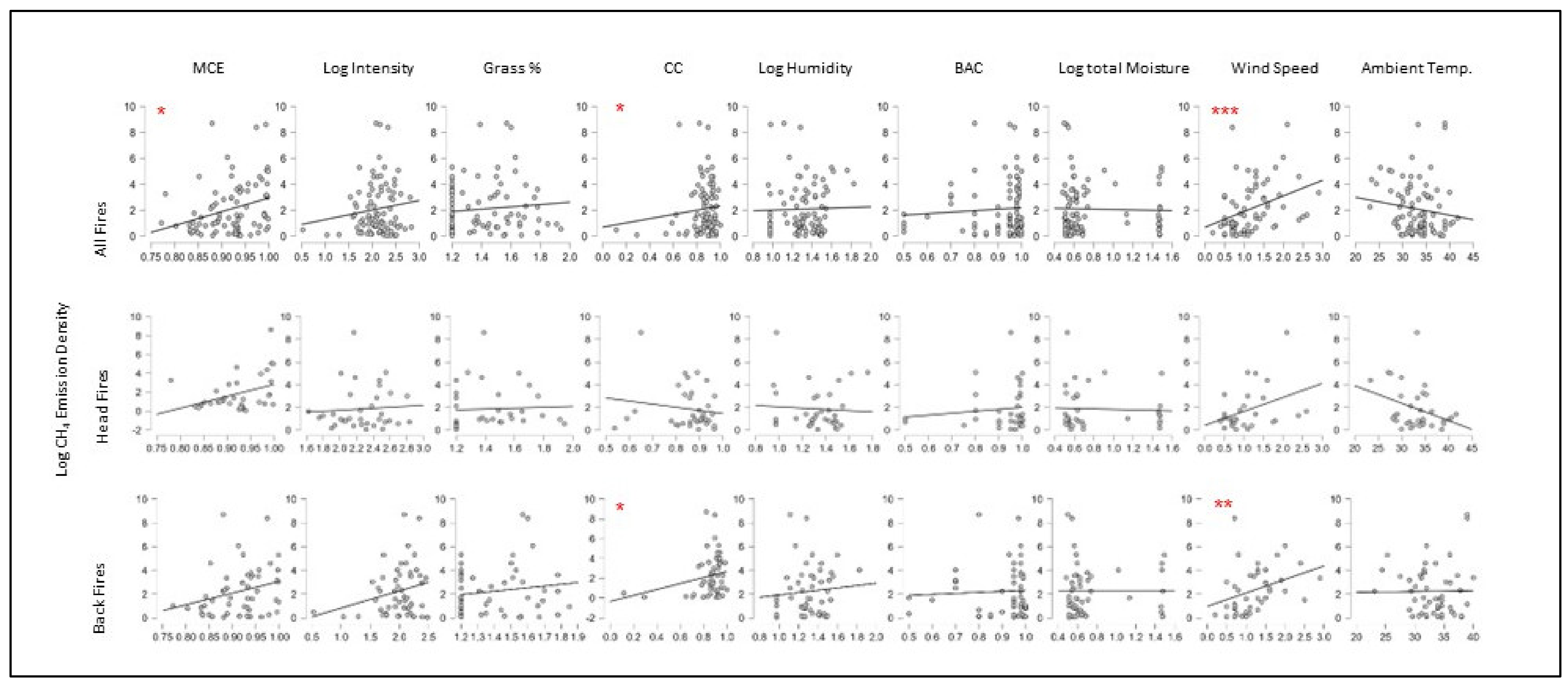
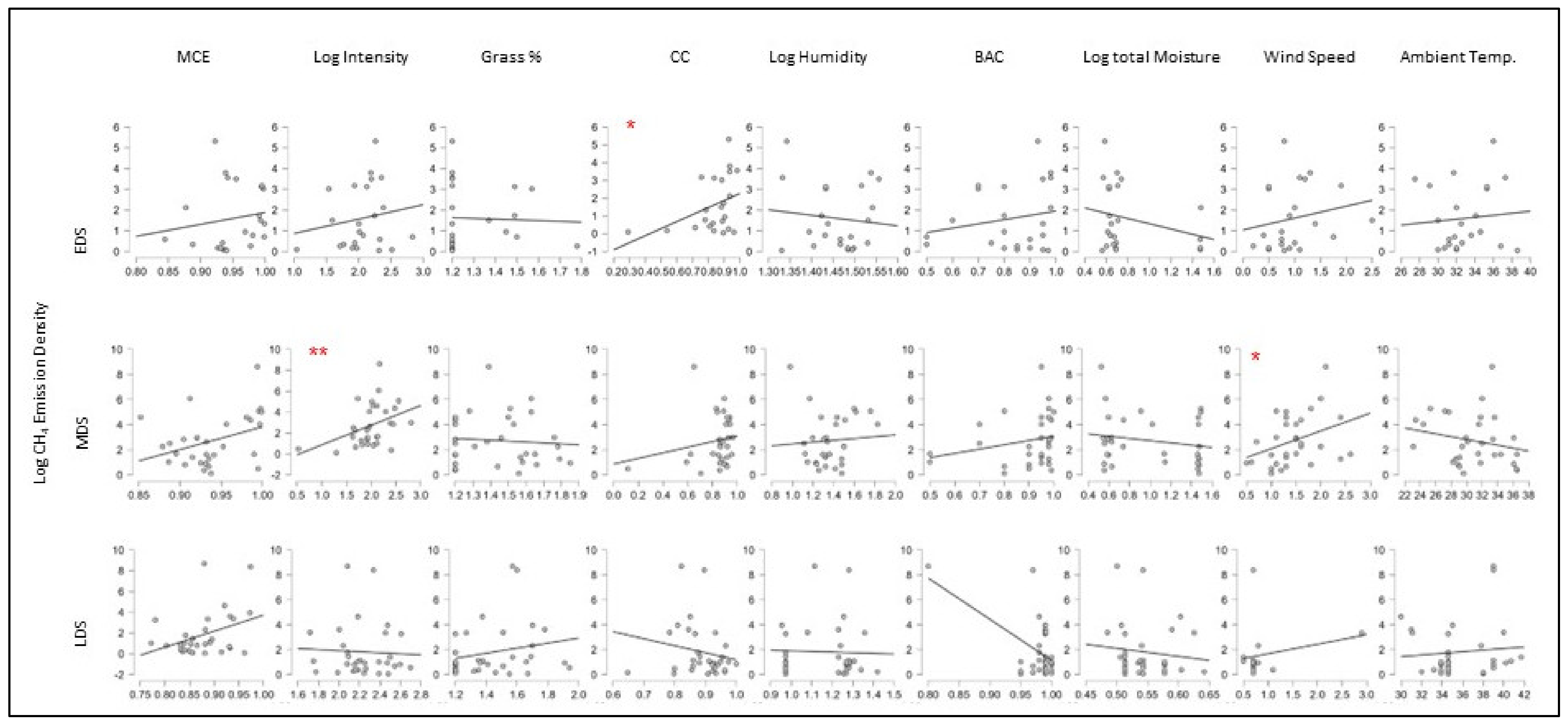


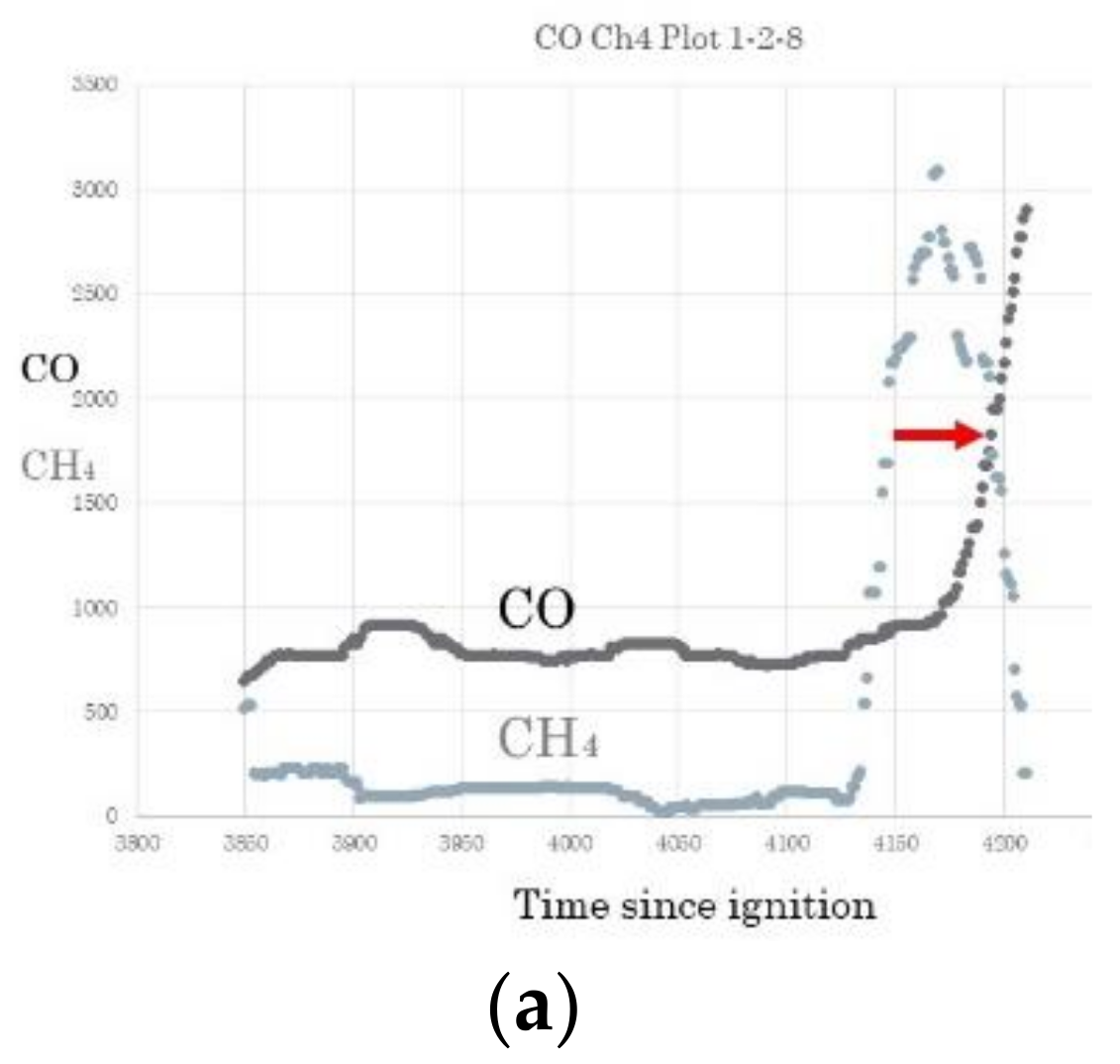
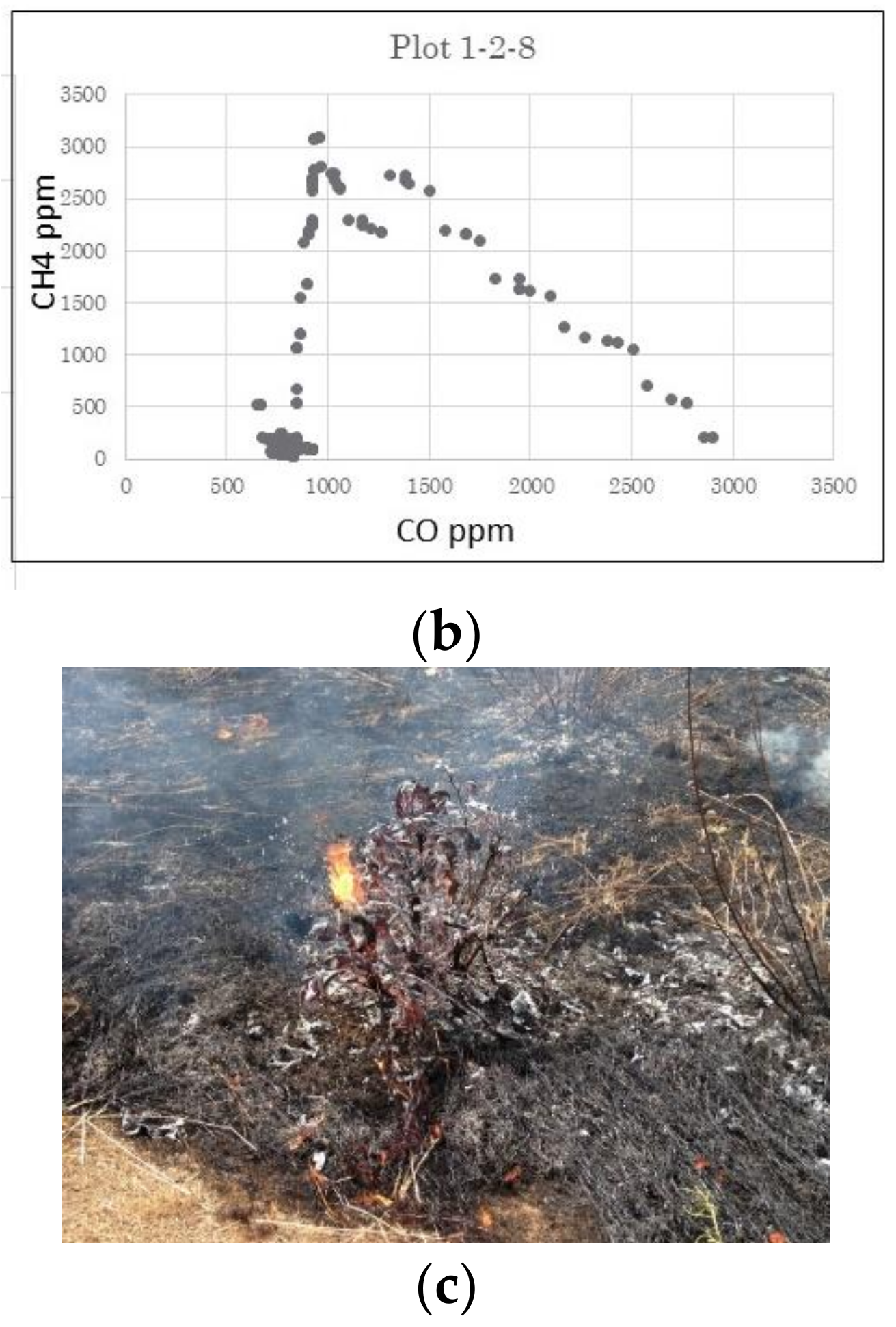
| Mean Plot Characteristics (n = 107) | Annual Mean | Head (51) | Back (56) | Early (25) | Middle (42) | Late (40) |
|---|---|---|---|---|---|---|
| Dry biomass (tons/hectare) | 4.1 | 4.0 | 4.2 | 3.8 | 4.2 | 4.1 |
| Grass biomass (percent) | 78.1 | 76.1 | 80.0 | 91.1 | 72.5 | 75.9 |
| Temperature (Celsius) | 33.3 | 33.3 | 33.3 | 32.8 | 31.2 | 35.8 |
| Relative humidity (percent) | 22.1 | 22.1 | 22.7 | 29.1 | 23.9 | 15.9 |
| Wind speed (meters/second) | 1.19 | 1.18 | 1.20 | 1.01 | 1.45 | 0.86 |
| Spread rate (meters/second) | 0.030 | 0.043 | 0.018 | 0.032 | 0.026 | 0.034 |
| Byram’s Fire Intensity (Kw/m) | 214.1 | 314.9 | 124.5 | 229.6 | 179.5 | 249.7 |
| Scorch Height (meters) | 1.5 | 1.7 | 1.3 | 1.4 | 1.3 | 1.7 |
| Fuel Moisture (%) | 8.9 | 10.1 | 7.9 | 8.6 | 14.3 | 3.5 |
| Burn Area Completeness (%) | 91.8 | 93.1 | 90.7 | 84.2 | 90.4 | 98.0 |
| Combustion Completeness (%) | 85.6 | 85.8 | 85.4 | 83.7 | 83.2 | 89.5 |
| Emissions and Fire Data n = 107 Values in Parentheses Have Outliers Removed (n = 86) | CH4 Density g/m2 | CH4 (EF) g/kg | MCE | Total Combustion (BAC + CC) | Byram’s Fire Intensity kW/m |
|---|---|---|---|---|---|
| All Fires (mean) | 2.27 (2.09) | 6.96 (6.93) | 90.1 (91.1) | 0.77 (0.78) | 224.5 (165.6) |
| Early Fires | 2.15 (1.60) | 6.52 (5.90) | 94.9 (93.1) | 0.71 (0.69) | 229.6 (154.5) |
| Middle Fires w/random burns | 2.87 (2.73) | 9.53 (9.76) | 89.5 (95.1) | 0.77 (0.75) | 162.2 (138.8) |
| Middle Fires wo/random burns | 3.16 (3.14) | 8.88 (10.35) | 85.0 (93.8) | 0.77 (0.75) | 170.9 (117.9) |
| Late Fires | 1.72 (1.82) | 4.53 (4.93) | 87.7 (87.7) | 0.82 (0.87) | 249.7 (199.5) |
| Head Fires | 2.39 (1.86) | 7.12 (6.86) | 88.6 (92.4) | 0.79 (0.79) | 296.4 (232.2) |
| Backfires | 2.16 (2.24) | 6.80 (6.98) | 91.5 (91.6) | 0.75 (0.78) | 120.1 (119.8) |
Disclaimer/Publisher’s Note: The statements, opinions and data contained in all publications are solely those of the individual author(s) and contributor(s) and not of MDPI and/or the editor(s). MDPI and/or the editor(s) disclaim responsibility for any injury to people or property resulting from any ideas, methods, instructions or products referred to in the content. |
© 2023 by the authors. Licensee MDPI, Basel, Switzerland. This article is an open access article distributed under the terms and conditions of the Creative Commons Attribution (CC BY) license (https://creativecommons.org/licenses/by/4.0/).
Share and Cite
Laris, P.; Koné, M.; Dembélé, F.; Rodrigue, C.M.; Yang, L.; Jacobs, R.; Laris, Q.; Camara, F. The Pyrogeography of Methane Emissions from Seasonal Mosaic Burning Regimes in a West African Landscape. Fire 2023, 6, 52. https://doi.org/10.3390/fire6020052
Laris P, Koné M, Dembélé F, Rodrigue CM, Yang L, Jacobs R, Laris Q, Camara F. The Pyrogeography of Methane Emissions from Seasonal Mosaic Burning Regimes in a West African Landscape. Fire. 2023; 6(2):52. https://doi.org/10.3390/fire6020052
Chicago/Turabian StyleLaris, Paul, Moussa Koné, Fadiala Dembélé, Christine M. Rodrigue, Lilian Yang, Rebecca Jacobs, Quincy Laris, and Facourou Camara. 2023. "The Pyrogeography of Methane Emissions from Seasonal Mosaic Burning Regimes in a West African Landscape" Fire 6, no. 2: 52. https://doi.org/10.3390/fire6020052
APA StyleLaris, P., Koné, M., Dembélé, F., Rodrigue, C. M., Yang, L., Jacobs, R., Laris, Q., & Camara, F. (2023). The Pyrogeography of Methane Emissions from Seasonal Mosaic Burning Regimes in a West African Landscape. Fire, 6(2), 52. https://doi.org/10.3390/fire6020052






